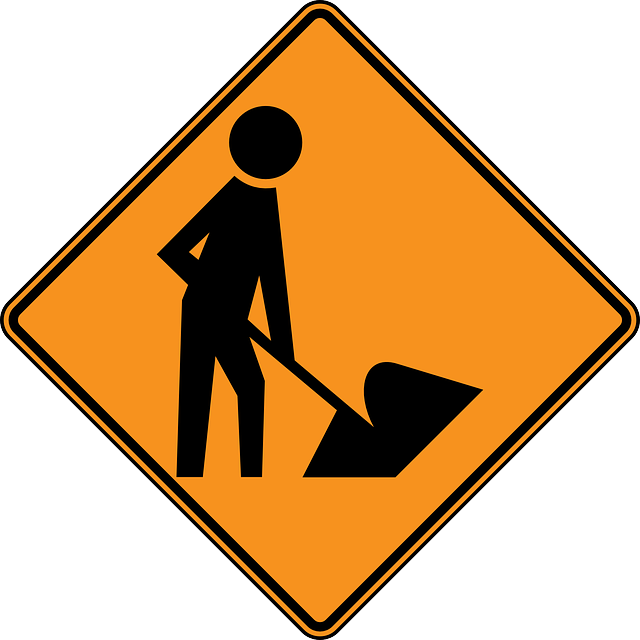Advanced non-invasive techniques like ground-penetrating radar (GPR), electromagnetic location, and radio frequency identification (RFID) have revolutionized subsurface utility detection. These underground utility detection methods offer safe, efficient alternatives to destructive practices, enabling accurate professional utility locating and subsurface utility mapping. Urban areas greatly benefit from these technologies in construction, renovation, infrastructure maintenance, and safe excavation, preventing damage to critical underground assets. Advanced utility detection services, including underground pipe and cable detection, streamline operations, minimize mistakes, and promote sustainable digging practices across various sectors.
Underground infrastructure is vital to modern life, yet detecting and mapping it without disrupting the surface can be challenging. This article explores non-invasive methods for identifying and localizing subsurface utilities, focusing on advanced technologies and professional locating services. From radio frequency identification to ground-penetrating radar, these innovative solutions offer precise, efficient underground utility detection. Discover how these techniques enhance safety, reduce costs, and streamline projects in diverse sectors, ensuring responsible infrastructure development while minimizing environmental impact.
Understanding Non-Invasive Methods for Underground Infrastructure Detection
Non-invasive methods for detecting underground infrastructure have revolutionized the way we identify and map critical utilities beneath our cities. These advanced techniques offer a safe and efficient alternative to traditional, more destructive methods. By employing specialized equipment and expertise in professional utility locating, subsurface utility detection services provide accurate information about the location, depth, and type of pipes, cables, and other essential utilities without disturbing the ground.
This approach is particularly valuable for urban areas where construction and renovation projects require precise knowledge of underground assets to prevent damage and ensure safety. Advanced utility detection services use non-invasive technologies like ground-penetrating radar (GPR), electromagnetic location, and radio frequency identification (RFID) to create detailed subsurface utility maps. These methods allow professionals to pinpoint the exact positions of underground pipes and cables, facilitating informed decision-making for various projects, from infrastructure maintenance to new construction.
Advanced Technologies in Subsurface Utility Mapping
The evolution of technology has led to significant advancements in the field of subsurface utility detection. Modern methods go beyond traditional techniques, offering more precise and efficient underground utility detection solutions. One such innovation is subsurface utility mapping, which utilizes advanced sensors and imaging technologies to create detailed maps of underground pipes, cables, and other critical infrastructure. This non-invasive approach allows professionals to accurately locate and identify utilities without disturbing the surface.
Professionals in utility locating now employ sophisticated equipment like ground-penetrating radar (GPR) and electromagnetic induction (EM) sensors. GPR technology sends radio waves into the ground, providing real-time data on subsurface structures. EM sensors, on the other hand, detect changes in the earth’s magnetic field caused by metal utilities, enabling precise identification of pipes and cables. These advanced utility detection services are invaluable for construction projects, infrastructure maintenance, and ensuring safe excavation, thus streamlining operations and minimizing potential damage to critical underground assets.
Professional Utility Locating Services: Benefits and Applications
Professional Utility Locating Services play a pivotal role in ensuring safe and efficient non-invasive subsurface utility detection. These specialized services leverage advanced technology such as Ground Penetrating Radar (GPR), electromagnetic location, and radio frequency identification (RFID) to accurately map underground pipes, cables, and other critical infrastructure. By employing these innovative methods, professionals can create detailed digital maps of the subsurface, enhancing safety for construction projects and reducing the risk of damage to vital utilities.
The benefits of engaging professional utility locating services are manifold. They offer enhanced accuracy, minimizing the chances of missing or misidentifying utilities. This precision prevents costly mistakes, delays, and potential hazards associated with striking underground pipes or cables during excavation. Moreover, these services contribute to sustainability by promoting responsible digging practices, which can significantly reduce environmental impact. Applications span diverse sectors, including construction, civil engineering, and utility maintenance, making them indispensable for modern infrastructure management.
Effective Non-Invasive Solutions for Pipe and Cable Detection Below Ground
Effective Non-Invasive Solutions for Pipe and Cable Detection Below Ground
Professional utility locating services have evolved significantly, offering advanced non-invasive utility detection methods to accurately map subsurface utilities. These cutting-edge technologies are transforming how we identify and locate underground pipes and cables, ensuring safe and efficient infrastructure management. By employing sophisticated sensor systems and data analysis, these services can pinpoint the exact positions of various utilities without causing any disturbance to the surface or underground environment.
Non-invasive utility detection has become indispensable in urban areas where extensive below-ground networks are densely packed. Advanced subsurface utility mapping techniques enable professionals to navigate complex labyrinths of pipes and cables, making it possible to avoid costly and time-consuming physical excavation. This not only minimizes disruptions to businesses and residents but also plays a crucial role in preserving the integrity of existing infrastructure during construction or maintenance projects.
The evolution of non-invasive methods for detecting underground infrastructure has revolutionized the way we map and locate utilities. Advanced technologies like ground-penetrating radar (GPR) and electromagnetic induction (EMI) have proven to be game-changers in the field, offering accurate and efficient subsurface utility mapping. Professional utility locating services, armed with these innovative tools, provide unparalleled benefits for various industries. By employing non-invasive techniques, these services ensure safe and precise identification of pipes, cables, and other critical underground assets without causing any damage. This not only enhances construction and excavation projects but also contributes to better urban planning and infrastructure management in the long term.
